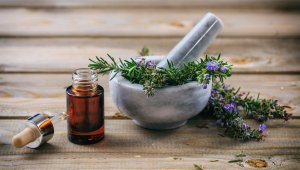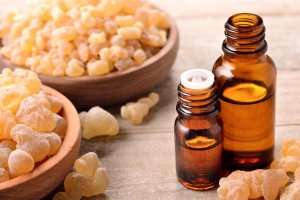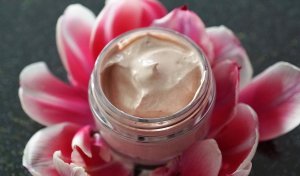Natural fragrances are complex formulations that contain aromatic raw materials that derive only from nature and are extracted via steam distillation or water.
They include: trees, raw fruits, animal extracts, herbs, leaves, seeds, roots and diverse woods.
These substances range from essential oils and botanical extracts to isolates, resins, distillates and volatile concentrates.
Due to the fact there is no legal definition of the term, natural, these scents are not so clearly characterized.
A commercial product label containing the word, natural, can be ambiguously translated on a label to mean a product that might contain both natural and synthetic ingredients with the majority being chemical in origin.
A Few Relevant Statistics About Natural Perfumes
According to a report conducted by Technavio, a leading market research and advisory company with global coverage, the natural fragrance market is expected to grow by $1.59 billion from 2020 to 2025 at an 8.59% compound annual growth rate (CAGR).

The report predicts that 32% of the market growth will derive from Europe, and specifically France, Germany and the United Kingdom.
Technavio asserts that consumer awareness of health implications arising from synthetic variations are causing a shift towards more natural perfume options.
According to Hearst Magazine and MarketCast, 75% of consumers are interested in buying brands that embrace sustainability, and before making a purchase, they want to know if a fragrance is environmentally friendly and made with natural ingredients.
The newest generation seeks out those scents and products that are eco friendly in diverse ways. This allows them to shop with a perspective of both awareness and careful attention.
According to StyleSage data, fragrances with sustainable components have been increasing in sold-out rates, reaching 12% in April of 2022.
The Character of Natural Fragrances
Natural notes are beautiful, but can be inconsistent in character. Some last longer on the skin and are more potent than others.
Recreating the same natural fragrances is no easy task even if the notes are derived from the same sources.
Planet Earth has suffered greatly from their continued use as well. Harvesting methods used to produce Indian sandalwood oil for example, has caused serious deforestation, and animal cruelty knows no bounds in the extraction of precious raw materials.
Resins from myrrh and frankincense, as well as animal byproducts, such as whale ambergris and musk from the sheath of a musk deer are all natural fixatives, but today they are hardly used because their extraction entails the death of the animal.

Natural fragrance formulations are complex, featuring aromatic compounds such as: essential oils, fractions of essential oils, isolates and exudates like: resins; distillates; extracts and volatile concentrates. Pure essential oils are always present in some quantity in any natural perfume.
They are usually blended with a soy or bee’s wax, which in tandem create a dense layer of scent. Natural perfumes are energetic, emotional and are often associated with healing and aromatherapy practices.
They vigorously compete with others in the global perfume market place. When focusing on which is preferred by consumers, lasts longer, costs less etc, the issue of lower cost often makes synthetic versions the winner.
Pure compounds are always labor-intensive, and therefore, more expensive.
It is the quality of the essential oils that will ultimately affect the impact of a natural fragrance because these alone will determine the scent’s longevity.
A natural fragrance may only last for a few hours on the skin, while others, such as synthetics, may still be detected days after the initial application.
Some of the more popular natural oils used in the personal care industry include: soft, bittersweet almond; slightly nutty jojoba; lush, tropical coconut (skin moisturizer); earthy, herbal and oily grape-seed; rosy, green geranium; soothing, fresh lavender; fruity, pungent olive oil (hair conditioner); herbaceous, mustardy rose hips oil (nail-care) and cool, minty eucalyptus.

Natural Fragrances vs Synthetic Fragrances
Synthetic notes not only protect the environment and the animal kingdom, they are also known to last longer as fixatives than their natural counterparts.
Usually, natural notes have a life span of about two and one half years, while synthetic perfumes are known to retain their scent in a bottle for up to five years.
In total, synthetic varieties comprise about two thirds of the world’s most popular perfumes and fragrances for scented products.
The Changing Trends Toward Natural Fragrances
Despite the above fraction, the battle between synthetic and natural still silently rages, as almost all quality perfumes contain a percentage, albeit small, of natural facets.
The change has been slow but unrelenting since 2004, with the advent of a myriad of perfume blogs gracing the Internet landscape.
Praising the smells of natural scents has helped the industry to thrive over the course of the last almost two decades.
According to Anya MC Coy, natural fragrance artisan and owner of Anya’s Garden, “…My customers, are just people who are trying to follow a natural lifestyle, not hippies living in communes…Natural perfumes are not known to announce themselves when you walk in a room.
They don’t last as long on the skin, though when applied to hair or clothes in the morning, they can last at least until dinner…Shortages and price fluctuations are part of the natural fragrance game.
Over the decades, I have seen vanilla prices fluctuate wildly. We do get weather, war, and other disruptions.”
The renewed natural fragrance trend has been beneficial to new boutique perfume houses.
Unconventional by nature and and free from older formulas that depend heavily on synthetic elements, the formulators of these scents can pick and choose the level of natural facets that will appeal to their targeted consumer base.
The situation is similar to those major purveyors of fragrance chemicals who can satisfy the demand for natural scents and command hefty prices.
Words can be misleading. While it is a compliment for a perfume to be called natural, in some instances it can also be a headache for manufacturers of superior perfumers.
This is no more clearly illustrated than by the recipe for one of the world’s most iconic natural fragrances; namely Chanel No 5.
Currently, it is in the process of revision because a few of the woodsy notes, which are extracted from natural mosses, are now being legally restricted by the European Union on the grounds that they contain potentially dangerous allergens.
Vanilla, sandalwood and patchouli are also very close to restriction because of their threat to the evergreen trees and forests of the world.
In the case of sandalwood, the oil is extracted from trees that are 30 to 60 years old.
On the other hand, lavender from the French region of Grasse can be produced in huge quantities with minimal impact on people or the environment.
According to perfumer, Kari Arienti, founder of Aroma Knowledge, a perfumery and fragrance training service: “There is just is not enough arable land to grow certain things…Some raw materials grow in regions that may be ecologically or economically sensitive..In those spaces, land use can be an ethical issue.”
The High Price of Natural Perfumes
Due to the fact that natural fragrances are produced on a much smaller scale than mainstream varieties, their methods of manufacture are far more time-consuming and meticulous.
In addition, the price of natural ingredients are exponentially much higher than those used in synthetics, and can range anywhere from double to twenty times the price of a synthetic ingredient of a similar odor profile.
In the end, finished natural perfumes retain a certain intensity, singularity and sophistication that chemical substances simply can never attain, albeit at a higher cost.
In Conclusion
If you are seeking a unique, newly composed synthetic or natural fragrance for induction into a specific product or product line, contact our teams today and discover a world of new possibilities!

Photo Credits: Pixabay
 alpha aromatics®
alpha aromatics®